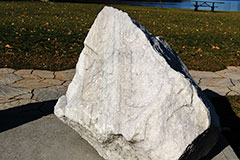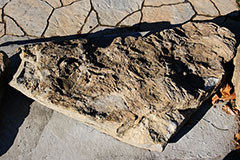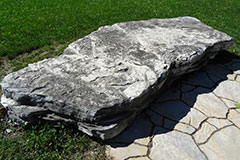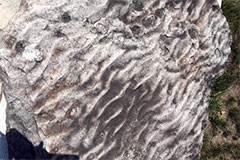Look for light-colored ridges on the rock’s surface. These are the burrow paths, or tubular trace fossils, of ancient worm-like marine animals.

Photo by Asia Reid.
Display rock 14 is dolostone with trace fossils of Ordovician age marine animals.
Dolostone is a sedimentary rock that is composed primarily of the magnesium mineral dolomite, CaMg(CO3)2.
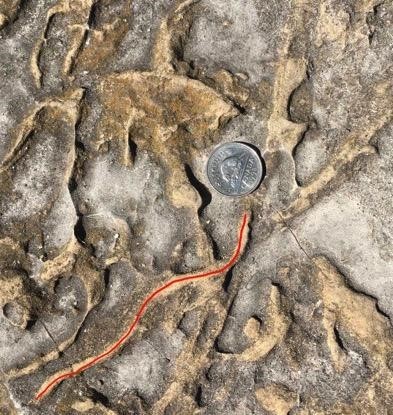
Photo by Asia Reid.
In this close-up image a red line has been added to highlight one of many burrow pathways.
How did this rock form?
The Ordovician Period was a time of great diversification for marine life. Bottom-dwelling organisms were developing new approaches to living on and in the sea floor sediments. Soft-bodied worm-like creatures burrowed through the ocean mud to feed on organic particles. Over millions of years the accumulated layers of sediment were compacted creating limestone. In this display rock the ancient pathways are slightly harder than the rest of the rock, and more resistant to erosion. They’re known as a trace fossil. Trace fossils can be found around the world as burrows, borings, feeding marks, root cavities, and even footprints. As indirect evidence of life in the past, trace fossils are important indicators of paleoenvironments.

